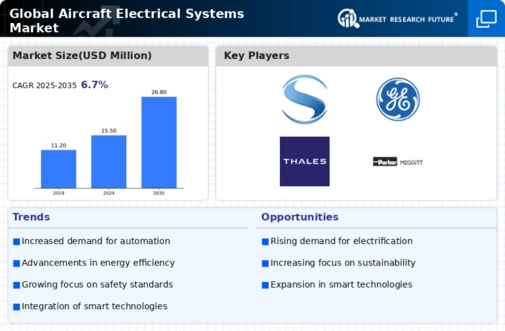Aircraft Electrical Systems Market Summary
As per Market Research Future Analysis, the global Aircraft Electrical Systems Market is projected to reach USD 19,344 million by 2030, growing at a CAGR of 6.7% from 2023 to 2030. The market is driven by the increasing demand for new aircraft and electric aircraft in commercial aviation. However, the lack of aviation infrastructure in key Asian economies may hinder growth. The COVID-19 pandemic has temporarily impacted the market, but recovery is expected as air passenger traffic rebounds. Technological advancements in aircraft electrical systems, particularly for hybrid and fully electric aircraft, present significant growth opportunities. The market is characterized by intense competition among global and regional players, with a focus on operational efficiency and innovative solutions.
Key Market Trends & Highlights
Key trends influencing the Aircraft Electrical Systems Market include technological advancements and regional growth dynamics.
- Market Size: USD 19,344 million by 2030; CAGR: 6.7% (2023-2030)
- Asia-Pacific expected to account for 41% of global aircraft deliveries by 2039; annual growth rate of air passenger traffic: 8.3%
- North America forecasted to require 9,000 new passenger aircraft over the next two decades; air passenger traffic growth: 2.7%
- Demand for battery management systems projected to grow due to ruggedized uninterruptible power systems
Market Size & Forecast
| Market Size | USD 19,344 million by 2030 |
Major Players
Safran (France), AMETEK, Inc. (US), Esterline Technologies (US), GE Aviation (US), Astronics Corporation (US), Honeywell International Inc. (US), Thales Group (France), Raytheon Technologies Corporation (US), Meggitt (UK), Amphenol Corporation (US)














